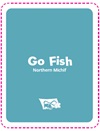Classroom Resources
Northern Michif Resources
Workbooks
Bingo
|
|
|
Games
|
|
|
Colouring
Labels
|
|
|
|
|
|
Miscellaneous
Click here to view a collection of Northern Michif books, developed by Erin Laliberte, Krissy Bouvier Lemaigre, and local language speakers from Île-à-la-Crosse.
About Northern Michif
Northern Michif is primarily spoken throughout northern Saskatchewan and parts of Northern Alberta; notable communities in Saskatchewan include Green Lake, Meadow Lake, Beauval, Île-à-la-Crosse, and Buffalo Narrows. It is considered by some to be a dialect of Cree, but with a noticeable French influence.
The language appears to have come into existence independently, evident in the fact that Old Ones and speakers of the language say that the French borrowings in Northern Michif were introduced by the clergy and school system rather than coming from Michif French. As missionaries and voyageurs followed the river systems from Red River to Northern Saskatchewan, Cree was the language they heard. They learned how to speak Cree and substituted French nouns mainly in the domestic domains, so while the language has French words like marsī (‘thank you’), l’zasiyet (‘plate’), or l’mak̹azān (‘store; shop’) animal names and numbers are all from Cree, which contrasts with the other Michif languages. Nevertheless, the French influence in Northern Michif sets it apart from other dialects of Cree enough that some speakers have reported difficulty in being understood by speakers of other dialects.
Elder Norman Fleury“We become who we are by listening and watching. We make la gaalet by the feel of our grandma’s fingers. There are no written recipes for food or life but there are moments and memories that form the basis for Métis identity.”



















